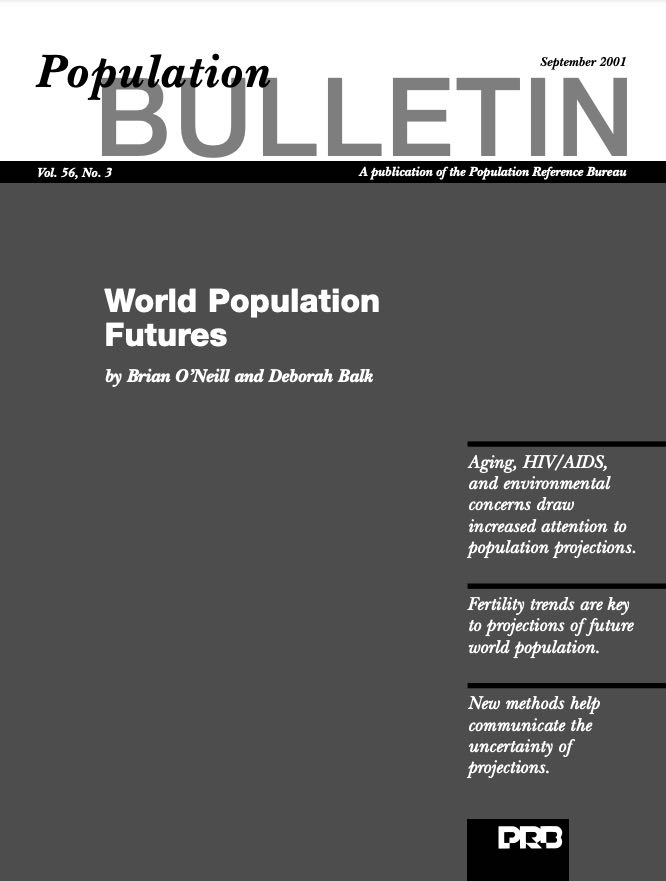
World Population Futures
Product: Population Bulletin, vol. 56, no. 3
Author: PRB
Date: October 2, 2001
Focus Area
(October 2001) What will the future inhabitants of the world be like? How many will there be, and what kind of world will they live in? We can only speculate about the answers to these questions, but we can be reasonably sure that population characteristics and social and environmental factors are likely to become more interconnected. Global environmental changes, for example, will be driven in part by the evolving size, geographic distribution, and makeup of the world’s population. In turn, changes in societies, economic systems, and the environment will influence population dynamics.
The nature of these linkages is unclear. Scientists do not agree on how (and how much) demographics, in concert with social, economic, and cultural forces, affect the environment; and they cannot know precisely how much socioeconomic and environmental factors will sway individuals’ future decisions about when or whether to have children, practice good health, or move to a new country. Yet the fact that forecasts of future population dynamics are inherently uncertain does not make them any less important. Scientists and policymakers are turning more attention to population projections. Their interest is driven by concern about the potential effects of aging populations on social security systems and economic growth, the possibility of declining populations in some industrialized countries, the long-term consequences of HIV/AIDS, and the implications of demographic trends for long-term environmental changes such as global warming and loss of biodiversity.
At the same time, researchers have taken a renewed interest in the mechanics of population projections, not only to improve accuracy, but also to make the results more useful and the methodology easier to understand for experts in a variety of academic fields and policy arenas. Demographers are experimenting with creative ways to express the uncertainty inherent in all projections and with new approaches for projecting population size and other characteristics. With a growing wealth of census and survey data and medical studies from around the world, researchers are also refining theories about how reproductive behavior and childbearing preferences may change, and on likely improvements in life expectancy.
This Population Bulletin explains projection methodology and discusses various approaches for expressing uncertainty. It analyzes the key assumptions on which most global projections are based: baseline demographic data and trends in future fertility, mortality, and migration. The Bulletin also reviews the conceptual basis for projecting demographic variables, discusses the extent to which environmental factors are or should be taken into account, and compares assumptions made by different institutions. It concludes with a discussion of what global population projections imply about the kind of world our descendents will inhabit.
Brian O’Neill is an assistant professor (research) at the Watson Institute for International Studies at Brown University.
Deborah Balk is an associate research scientist at the Center for International Earth Science Information Network (CIESIN) at Columbia University where she is project scientist for the Socioeconomic Data and Applications Center (SEDAC).

 ">
">